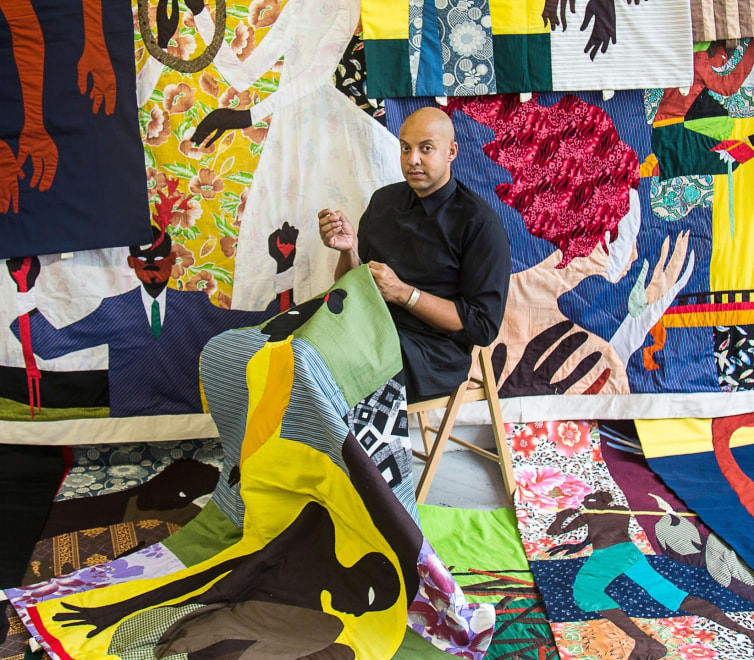
James Cohan is pleased to present Sing to Me of Many Turns, an exhibition of new work by Christopher Myers, on view at the gallery’s 291 Grand Street location from September 21 through November 4, 2023. This is Myers’ second solo exhibition with James Cohan. The gallery will host an opening reception with the artist on Thursday, September 21 from 5-7 PM.
Sing to Me of Many Turns is a retelling of Homer’s Odyssey, presented in an epic panoramic cycle of appliqué textile works, stained glass and sculpture. Myers filters this ancient journey through the lens of contemporary tales of migration that have shaped the Lower East Side neighborhood within which the gallery sits.
Myers writes, “When I was a kid, the neighborhood was an intersection point of multiple histories of migration. You could, on any given Sunday, see the remnants of the influx of Jewish immigrants in the 1930s, contemporary waves of immigrants to Chinatown, the old men living out the tail end of the bachelor society, and young folks from other parts of China sleeping in shift bed hotels and socializing well into late nights after their many jobs were over.”
Whether thinking about his grandfather who arrived in New York through Ellis Island in the 1920s, or the innumerable forced migrations that brought his African-American ancestors to these shores, Myers is keenly aware of the mythic proportions of what it means to reframe oneself in the world.
The appliqué works in this exhibition are largely episodic and reflect the structure of the Odyssey, with nods to the other literary descendants of that seminal work like James Joyce’s Ulysses and Derek Walcott’s Omeros. In one textile work about the Lotus Eaters, Myers explores various kinds of escape and the destruction these escapes yield. Another work, whose central subject is Calypso, examines the figure of a woman who across millennia has been presented and perceived as an often thankless caretaker.
The exhibition is punctuated by a monumental illuminated stained-glass painting in the second gallery, which depicts Odysseus washed up on the beach in a pile of leaves. In this work, Myers considers both the sense of attachment all migrants have to the liminal–the shorelines and the hyphens–and the importance of narratives of migrant bodies and Black bodies at rest.
Through a deep investigation of Homer’s text and the histories of migration in New York City, Myers weaves together both practices and stories that connect to larger narratives of what it means to remake the world and yourself in each movement across the globe. From shift beds and ICE raids to old men speaking Fujianese over bird cages in Seward Park and generations of fabric workers on the Lower East Side, Myers brings these lived experiences into a radical refiguring of a classical narrative with special, even urgent, relevance for today.